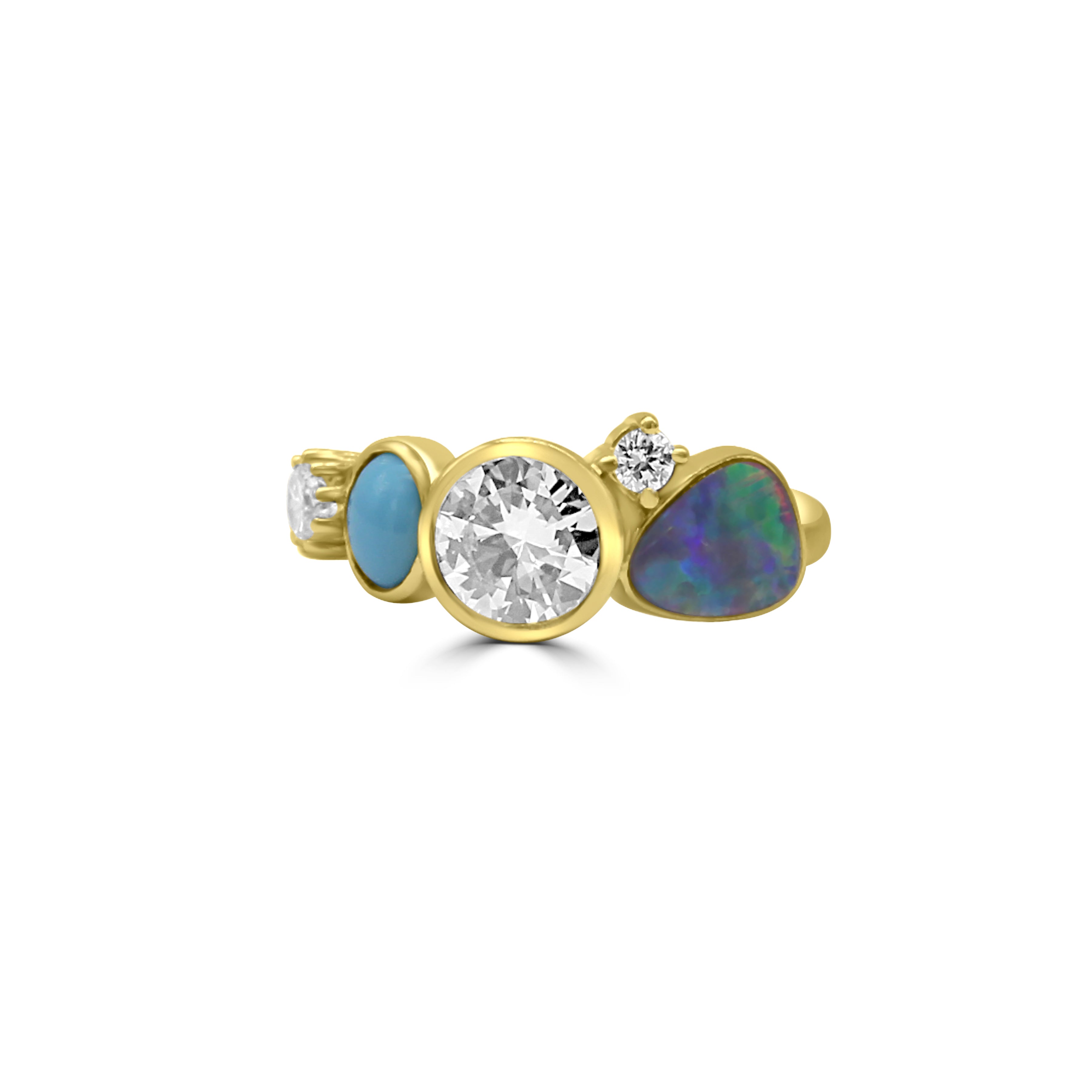In today's world of conscious consumerism, the journey of a gemstone from mine to market has become as important as its beauty. Traceability in the gemstone and diamond industry isn't just a buzzword; it's a crucial aspect that ensures ethical sourcing and responsible practices. As more and more couples opt for unique gemstone engagement rings and stunning gemstone jewelry, the question arises: how traceable are these colorful treasures compared to their diamond counterparts?
The growing interest in ethical sourcing has sparked a revolution in the jewelry industry. Consumers are no longer satisfied with just the sparkle; they want to know the story behind their precious gems. This shift has pushed the industry to develop more transparent and accountable practices, especially when it comes to tracing the origin and journey of gemstones and diamonds.
Diamonds: A Cut Above in Traceability?
When it comes to traceability, diamonds have a head start. The Kimberley Process Certification Scheme (KPCS), implemented in 2003, was a game-changer for the diamond industry. This international certification system aims to prevent conflict diamonds from entering the legitimate trade. Under the KPCS, participating countries must meet minimum requirements and provide certificates guaranteeing that their rough diamonds are conflict-free.
But the diamond industry didn't stop there. Embracing modern technology, many companies are now using blockchain to enhance diamond traceability. This digital ledger creates an immutable record of a diamond's journey, from mine to market, providing unprecedented transparency. This project is in it’s baby steps in 2023-24 and hopefully will become a standard one day.
Additionally, many diamonds now come with laser inscriptions and certificates of origin, adding another layer of traceability. However, it's important to note that while these methods have significantly improved diamond traceability, they're not perfect… yet. The mixing of diamonds from different sources during processing can still complicate tracing efforts.
Colored Gemstones: A Rainbow of Challenges
When we shift our focus to colored gemstones, including popular colored gemstones, like blue Sapphires for example, used in engagement rings, the traceability landscape becomes more complex. Unlike the relatively centralized diamond industry, the colored gemstone sector is highly fragmented, with numerous small-scale mining operations scattered across the globe.
One of the biggest challenges is the lack of a unified global certification system for colored gems, similar to the Kimberley Process for diamonds. This absence makes it more difficult to establish standardized traceability practices across the industry.
However, progress is being made. Organizations like Gemfields and the Responsible Jewelery Council are working to establish standards for responsible sourcing in the colored gemstone sector. Some companies are implementing mine-to-market programs for specific gemstones, such as emeralds and rubies, to enhance traceability.
It's also crucial to mention that some countries have been banned from world export due to human rights violations and lack of participation in regulations. For instance, Burmese rubies have been subject to import bans in several countries due to concerns over human rights abuses in Myanmar.
Despite these challenges, the colored gemstone industry is making strides in improving traceability, albeit at a slower pace than diamonds. Gemological laboratories are refining techniques to determine the geographical origin of gemstones, and some companies are exploring blockchain technology to create more transparent supply chains.
The Driving Force of Consumer Awareness
The growing consumer interest in ethically sourced gems and diamonds is a powerful force driving change in the industry. More and more buyers are considering traceability when making purchasing decisions, especially when it comes to significant pieces like gemstone engagement rings.
Retailers play a crucial role in this process. By promoting traceable gems and diamonds and educating consumers about the importance of ethical sourcing, they can help drive demand for more transparent practices across the industry.
As a consumer, don't hesitate to ask questions about the origin of your gems and diamonds. Reputable jewelers should be able to provide information about the sourcing of their stones and the efforts being made to ensure traceability.
A Sparkling Future
While the journey towards full traceability in the gemstone and diamond industry is ongoing, significant progress has been made. At eDiamonds and Designs, we're committed to ethical sourcing for all gemstones used in our jewelry, including our stunning gemstone rings and other gemstone jewelry pieces.
Remember, every gemstone has a story. By choosing traceable gems and asking the right questions, you're not just acquiring a beautiful piece of jewelry – you're supporting responsible practices and contributing to positive change in the industry.
As we continue to push for greater transparency and traceability, we can look forward to a future where every gemstone's journey is as clear and brilliant as its sparkle. Whether you're drawn to the timeless allure of diamonds or the vibrant beauty of colored gemstones, you can wear your jewelry with pride, knowing you've made an ethical choice.
Give us a call and schedule a 15 minute consultation for your very own traceable beauty.



